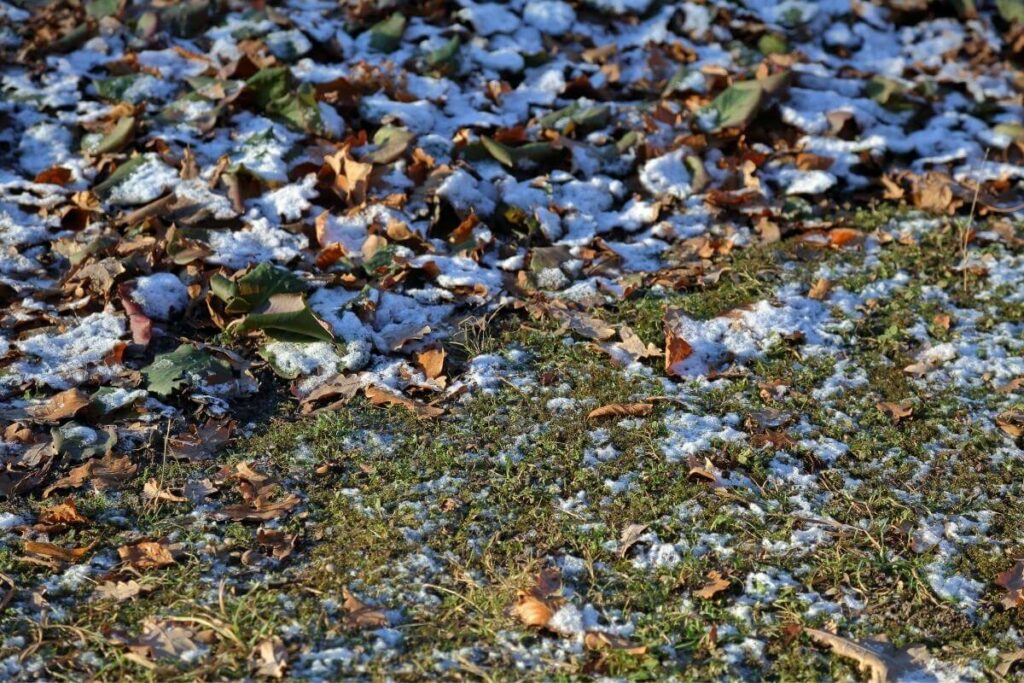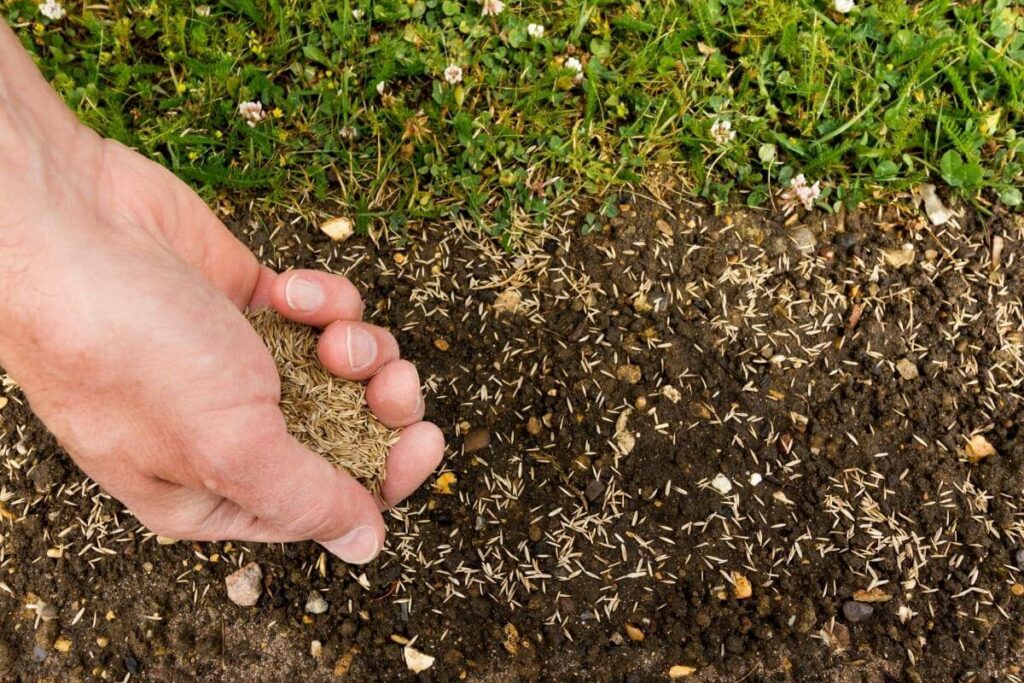If you already have a lawn or are working your way towards one, you might be wondering if you can plant your grass seeds in the cold, as you don’t want to end up with a bare lawn in case grass seeds can’t withstand winter.
This is why we’ve put together a little winter guide on everything you need to know about grass seeds and the cold, so let’s get straight into it!
Can Grass Seeds Withstand the Cold?
The grass seed itself is quite durable when it comes to extreme temperatures; the seeds won’t die in consistent freezing temperatures.
What can damage the seeds, however, is temperature inconsistency.
Inconsistent frost causes the soil to go through cycles of freezing and defrosting, which lead to trapped moisture around the seed, and this causes the rotting of the grass seed itself; the seed dies.
Mechanism of Survival
The reason grass seeds can withstand frost is their ability to undergo dormancy.

This means that, as long as the seeds haven’t yet begun their germination processes when the frost hits, the seeds enter a dormant or hibernation state to cope with such unfavorable conditions.
During their dormant state, the seeds undergo priming, enzyme activation, and endosperm breakdown.
Then, when the winter starts dissociating and the temperature is ideal once again, germination is activated; the roots emerge, and the grass begins to grow into a beautiful lawn.
Utilizing Harsh Conditions
As a matter of fact, this dormancy feature is utilized by grass growers to remain steps ahead when spring approaches in a process called “Dormant Seeding.”
Instead of waiting for the soil to fully thaw before sowing their grass seeds, they plant the seeds in the depths of winter, where the seeds then enter a dormant state.
Good News: And once the conditions are right again, grass seeds get back on track and start growing.
Dormant Seeding
Several growers are using the dormant seeding technique while planting their lawn.
In fact, using dormant seeding can result in seeds producing grass earlier in what can reach up to 15 days when compared to spring seeding.
Dormant seeding is also a great option if you’ve missed your ideal sowing window and don’t wish to wait for the next season.
It’s worth mentioning that the dryness of the soil in winter helps achieve better soil-to-seed contact while reducing the need for weed control and disease prevention measures.
However, dormant seeding subjects your lawn to the risk of birds and rodents feeding on your seeds before they get their chance to blossom.
Can Grass Seedlings Withstand the Cold?
While grass seeds can survive the cold, baby grass seedlings simply can’t.
Their short, weak roots and lack of leaf surface area leave them short on survival resources.

Young, underdeveloped roots also freeze easily, which completely shuts down the water and nutrients supplies to the plant.
To make matters worse, the lack of leaf surface area prevents the grass seedling from producing sufficient food and energy via photosynthesis.
With no food and no water, the seedling doesn’t make it through the winter and dies.
It takes a minimum of six weeks for your grass seedling to grow a strong enough root system that ensures survival.
Best Practice: Make sure to correctly schedule your sowing to allow enough time for the grass seed to equip itself for the harsh winter ahead.
Protecting Grass from Frost Damage
Now, what do you do if you’ve already planted your seeds less than six weeks before that first frost?
What happens if the seeds have already begun sprouting when the frost hits?
Don’t worry; it can still be salvaged.
Luckily, there are a few things that you can do to protect your seedlings from the frost.
Watering the Grass
First things first, you’ll need to constantly water your grass.
Watering helps reserve heat in the soil, which prevents it from freezing.
So, make sure you water your soil with warm tap water a few times throughout the night to protect your seedlings from the frost.
Covering the Lawn/Landscape
Secondly, you’ll need to get your hands on some covering. Tarp, plastic, fabric, and lumber are good examples.

What you’ll need to do is cover your seedlings in the evening and expose them to fresh air and warm sunlight during the day.
Works Well: Covering the seedlings overnight serves the same purpose as watering the soil: retaining heat. The covers keep warm air trapped close to the soil to prevent freezing.
Avoiding Pressure
Finally, avoid any pressure on or direct contact with the frosted grass.
Human feet, farming vehicles, or animals going over the frozen grass will “break” it.
This damage can sometimes be irreversible, so it’s best to avoid all sorts of pressure on unthawed grass.
Types of Grass
It’s also important to distinguish between the different types of grass before embarking on your grass-growing journey.
Grass can be broadly divided into two main types: warm-season and cool-season grasses.
Let’s have a look at them:
- Warm-season grasses: They thrive best at 80-95 F (27-35 C) daytime air temperatures and 70 F (21C) soil temperatures.
- Cool-season grasses: This type performs best in daytime air temperatures of 60 -75 F (15-24C) and 50-65 F (10-18C) soil temperatures.
Bottom Line
As you can see, grass seeds can survive harsh winters by going into dormancy.
However, they need consistent temperatures, as inconsistent ones will kill the seed due to frequent freezing and defrosting.
So, if you’re storing grass seeds, you need to take care of this aspect.
Also, the dormancy gave rise to dormant seeding, which is a popular practice among grass growers.
They start seeding the lawn in late fall so that the seeds stay dormant all winter and start germinating in the next spring.
What’s at risk from the cold is the grass seedling; the cold weather can kill it.
So plant your seeds at least six weeks before the first frost to avoid having seedlings in the winter.
However, you can still protect your grass in the winter by watering the soil with warm tap water, covering the grass overnight, and avoiding direct contact with the grass if it frosts.
Also Helpful
- Why Is My Newly Sown Grass Turning Yellow?
- Do Green Roofs Need Drainage?
- Can I Use Compost For Overseeding?


